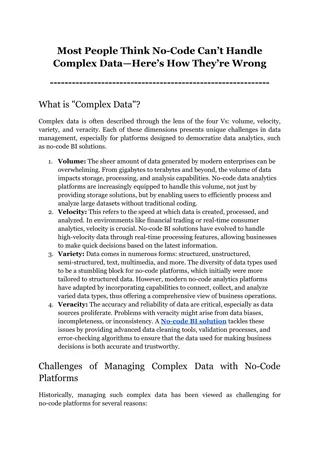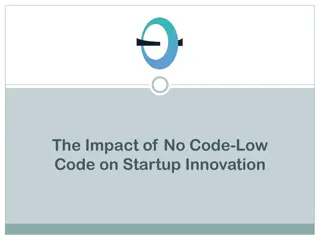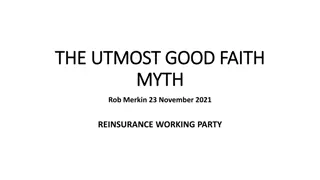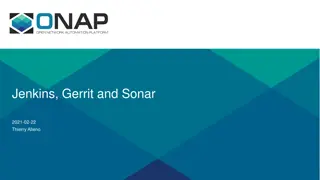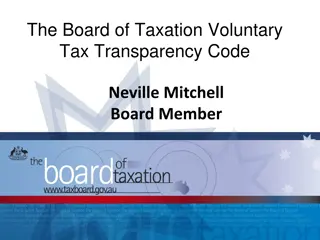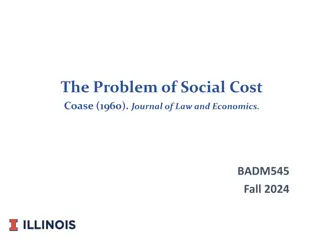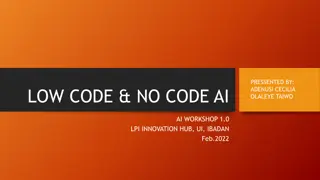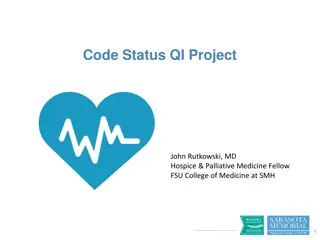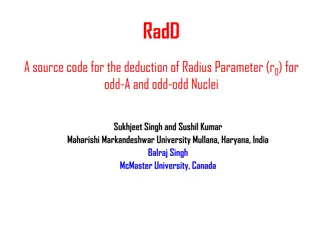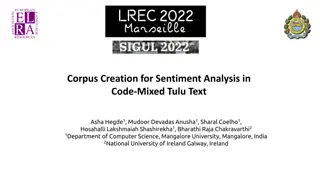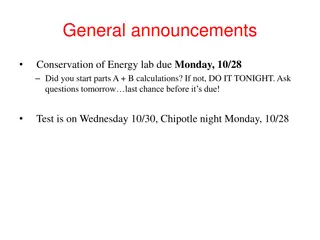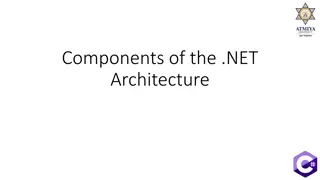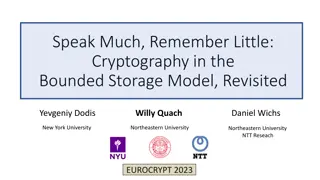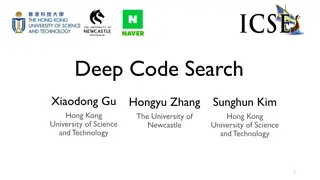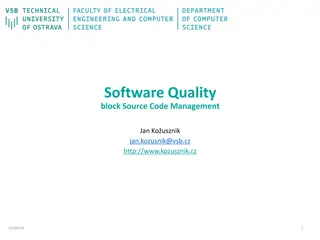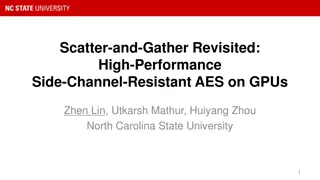
Understanding Complexity Theory: NP, P vs. NP, PSPACE, and EXP
Explore the concepts of NP, P vs. NP problem, verification of certificates, and the complexity of problems in NP using brute-force search. Dive into the relationships between complexity classes P, NP, PSPACE, and EXP, and the implications of their containment. Discover the significance of CLIQUE in the context of NP-hardness and NP-completeness.
Download Presentation

Please find below an Image/Link to download the presentation.
The content on the website is provided AS IS for your information and personal use only. It may not be sold, licensed, or shared on other websites without obtaining consent from the author. If you encounter any issues during the download, it is possible that the publisher has removed the file from their server.
You are allowed to download the files provided on this website for personal or commercial use, subject to the condition that they are used lawfully. All files are the property of their respective owners.
The content on the website is provided AS IS for your information and personal use only. It may not be sold, licensed, or shared on other websites without obtaining consent from the author.
E N D
Presentation Transcript
CMSC 28100 Introduction to Complexity Theory Complexity Theory Spring 2024 Instructor: William Hoza 1
The complexity class NP Let ? be a language Definition:? NP if there exists a randomized polynomial-time Turing machine ? such that for every ? : If ? ?, then Pr ? accepts ? 0 If ? ?, then Pr ? accepts ? = 0 Nondeterministic Polynomial-time 2
How to interpret NP NP is not intended to model the concept of tractability A nondeterministic polynomial-time algorithm is not a practical way to solve a problem Instead, NP is a conceptual tool for reasoning about computation 3
Verification of certificates perspective Let ? be a language Claim:? NPif and only if there exists a deterministic polynomial-time Turing machine ?(a verifier ) and a constant ? such that: For every ? ?, there exists a string ?(a certificate / witness ) such that ? ?? and ? accepts ?,? For every ? ?, for every string ?, the machine ? rejects ?,? 4
NP The P vs. NP problem P P NP It is conjectured that P NP, but nobody knows how to prove it 5
Solving problems in NP by brute force Claim:NP PSPACE Proof: Let ? be a nondeterministic TM that runs in time ??. Given ? ?: 1. For every ? 0,1??, simulate ?, initialized with ? on tape 1 and ? on tape 2 2. If we find some ? such that ? accepts, accept. Otherwise, reject NP can be informally defined as the set of problems that can be solved by brute-force search 6
EXP PSPACE NP P 7
P vs. NP vs. PSPACE vs. EXP P NP PSPACE EXP What we expect: All of these containments are strict What we can prove: At least one of these containments is strict. (Why?) 8
Complexity of CLIQUE Recall: CLIQUE = { ?,? ? has a ?-clique} Last time, we discussed the fact that CLIQUE NP Consequence: If P = NP, then CLIQUE P Plan for this week: We will prove that if P NP, then CLIQUE P This will provide evidence that CLIQUE P To prove it, we will use concepts of NP-hardness and NP-completeness 9
NP-hardness Definition: Let ? be a language. Suppose that for every ? NP, there is a poly-time mapping reduction from ? to ?. In this case, we say that ? is NP-hard ? is NP-hard means ? is at least as hard as every language in NP 10
NP-completeness Definition: Let ? be a language. We say that ? is NP-complete if ? is NP-hard and ? NP The NP-complete languages are the hardest languages in NP If ? is NP-complete, then the language ?can be said to capture / express the entire complexity class NP 11
NP-complete languages are probably not in P Claim: Suppose ? is NP-complete. Then ? P if and only if P = NP Proof: First, assume P = NP. Since ? NP, it follows that ? P Now assume P NP, i.e., there is some language ?HARD NP P By NP-hardness, there is a poly-time mapping reduction from ?HARD to ? Since ?HARD P, this implies ? P 12
NP-completeness NP-hard NP-complete NP P 13
Proving NP-completeness How can we prove that a language like CLIQUE is NP-complete? How can we use graph theory to simulate Turing machines? Key idea: Code as Data 14
Code as data, revisited Recall principle: A Turing machine ? can be encoded as a string ? ? is an algorithm, but at the same time, ? can be an input to another algorithm! Similar idea: A circuit ? can be encoded as a string ? You investigated ways to do this on problem set 5 ?is an algorithm, but at the same time, ? can be an input to another algorithm! What can we do with this idea? 15
Circuit value problem Let CIRCUIT-VALUE = { ?,? ? is a circuit and ? ? = 1} Claim:CIRCUIT-VALUE P Proof sketch: Suppose ? has ? nodes. To compute ? ? : 1) Mark all the input nodes with their values 2) While there is an unmarked node: For every gate ?, find all the nodes that feed into ?. If they are all marked with their a) values, then mark ? with its value 16
Let ? be an input to ?. How should ? be interpreted? Constructing circuits that implement TMs A:? is the description of a circuit that decides ? B:? is the description of a Turing machine that decides ? Let ? P where ? C:? is the binary encoding of a string in ? D:? is the binary encoding of a string in ? Since P PSIZE, we know that for every ?, there exists a polynomial-size Respond at PollEv.com/whoza or text whoza to 22333 circuit that computes ??, i.e., it decides ? on inputs of length ? Theorem: There is a polynomial-time algorithm such that given 1?, the algorithm outputs the description ? of a circuit ? that computes ?? Proof sketch: Use the circuit construction we used to prove P PSIZE 17
Circuit satisfiability Satisfiable Let ? be an ?-input 1-output circuit ?1 ?2 We say that ? is satisfiable if there exists ? {0,1}? such that ? ? = 1 Unsatisfiable ?1 ?2 18
Circuit satisfiability is NP-complete Let CIRCUIT-SAT = { ? ? is a satisfiable circuit} Theorem: CIRCUIT-SAT is NP-complete. Consequence: Studying CIRCUIT-SAT (one specific language) is equivalent to studying the abstract concept of verifiability (as modeled by the complexity class NP) 19
Proof that CIRCUIT-SAT NP Given ? , where ? is an ?-input 1-output circuit: Pick ? 0,1? at random 1. Check whether ? ? = 1 (recall CIRCUIT-VALUE P) 2. Accept if ? ? = 1; reject if ? ? = 0 3. 20
Proof that CIRCUIT-SAT is NP-hard Let ? be any language in NP Our job: Design a mapping reduction from ? to CIRCUIT-SAT 21

